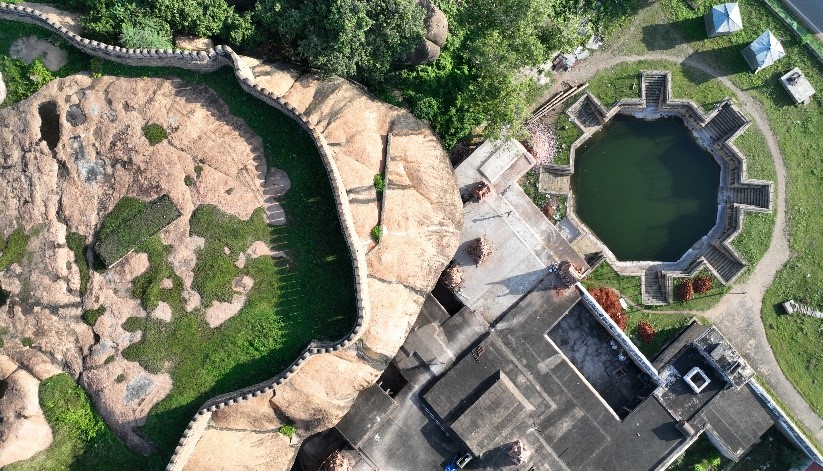Great Day Greetings !
World Heritage Day: Celebrating Water Commons (April 18, 2024)
The traditional water commons symbolize the cultural landscapes of the context and to be valued as the living heritage. Rejuvenating the traditional practices like Kudimaramathu and Neerkatti system instills conservation traits within the cultural practices. Preserving, restoring and scaling-up of traditional practices carries the native wisdom for generations. The April 18 is celebrated as World Heritage Day and the theme of the year is `Discover and Experience Diversity’.

The unique Hexagonal temple tank of Tirumayam, Tirumayam, is situated on the ancient trade route, and now exists 20km from Pudukkottai, on Trichy to Karaikudi road. This unique hexagonal-shaped temple tank was added to the east of Sathyagiri Perumal Temple, a rock-cut temple belonging to the Eighth century A.D. Now, it exists in the Tirumayam fort complex developed by Vijaya Raghunatha Sethupathi, the Raja of Ramnad, during 1693-1708. Later the fort was handed over to his brother-in-law Raghunatha Raya Tondaiman. The fortress is of great historical significance and was an important stronghold of rebel chieftains in the Polygar Wars. Oomathurai, the brother of Panchalankurichi chieftain Kattabomman, who revolted against the British was captured in this fort. The fort is locally known as Oomayan Kottai. This temple tank is popularly called ‘Sathyagiri Theertham’. The temple tank is used by the locals for bathing purposes. Rain is the main source of water and the surplus water of the tank drains into the nearby agriculture field. The tank never dries up. This monument comes under the protection of the Archaeological Survey of India, Trichy Circle.
Let us discover the Water Commons which reminds us the heritage and preserve them for generations!